Battle for Information: Intelligence Machine Projects
Australia plans to purchase 225 new combat reconnaissance vehicles to replace its ASLAV 8x8 manufactured by GDLS Canada
As part of the process of preparing for future threats, the armed forces of some western countries intend to purchase new generation intelligence vehicles. Consider several projects currently being implemented and the opportunities that they will provide.
A new generation of intelligence vehicles will provide an unprecedented level of situational awareness and targeting capabilities. The newest programs on cars started in France and the UK, the first has chosen the wheeled family, and the second tracked platform.
The Land Force Joint Strike (LJS) joint concept of the British Army is built around the General Dynamics UK Ajax family of tracked reconnaissance vehicles, which are scheduled for availability by 2020 year.
Platform view
Chief of General Staff General Nick Carter introduced the LJS concept at DSEI in London in September 2015. The Ajax project was chosen for the requirement, which has been known for a long time as the Scout Specialist Vehicle, as well as for the “reconnaissance / assault” variant shown at the exhibition. Carter said that the LJS concept, built around Ajax, will give the army the ability to "hit hybrid opponents in difficult terrain and densely populated urban areas."
Ajax will replace the Scimitar CVR (T) family of combat reconnaissance vehicles (Combat Vehicle Reconnaissance-Tracked), which entered service with the British army back in 1974, when binoculars, hand compasses, paper maps and wax crayons were the main tools of commanders of reconnaissance vehicles. Then, in order to ensure at least some secrecy before sending via unencrypted communication channels, the messages were encrypted manually. The Scimitar machine is armed with an unstabilized RARDEN 30-mm cannon. The weight of the original eight-ton Scimitar increased by 40%, since additional armor and other equipment was installed for operations in the Balkans in the 90-ies and later in Iraq and Afghanistan.
The deputy head of Combat Tracks Group, Nick Hunter, a member of the Defense Property and Support Organization, said at the DSEI exhibition that the Ajax machine is much more than just a replacement for CVR (T) and that it will become the backbone of the military.
According to Kevin Connell, Ajax, vice president of GD Land Systems UK, will provide advanced all-weather reconnaissance and targeting capabilities, round-the-clock operation of sensors, which will allow Ajax to detect and capture targets more effectively at greater distances than those systems that are currently on armed. "
Hunter stressed that it would take the army some time to fully understand the possibilities that the new Ajax machine would provide.
The newest Ajax project of the British Army
Ajax Contract
In September 2014, the UK Department of Defense gave GDUK a contract worth 5,3 billion dollars to supply 589 vehicles in six variants: 245 reconnaissance / assault Ajax; 93 Bres Ares; 112 command vehicles Athena C2; 51 Argus Engineering Intelligence Machines; Atlas 38 recovery vehicles; and Apollo 50 repair machines. In accordance with the development contract worth 500 million pounds sterling, issued in July 2010, the company will supply seven test machines for testing and evaluation to 2016.
At the heart of the Ajax project is the ASCOD (Austrian Spanish Co-operative Development) BMP developed by GD European Land Systems (GDELS) to meet the needs of the Austrian and Spanish armies. However, all the characteristics of the ASCOD machine, regarding mobility, fire power and protection, have been enhanced to meet British requirements. In addition, integrated intelligence and target designation systems and electronic architecture from GDUK are integrated.
The Ajax variant has the following features: a crew of three people plus the ability to accommodate a fourth person; the main panoramic sight with a range greater than the range of the existing machine sights; 40-mm Case Telescoped Cannon telescopic cannon from CTA International; depending on the task being performed, the ability to install, instead of the main sight, a fully stabilized remotely controlled combat module (SDM); modular reservation; electronic architecture; engine power 810 hp MTU; improved torsion bar suspension; Finally, the auxiliary power unit. Before deployment, the machines will be optimized either for combat operations or for peacekeeping tasks.
The total base platform for variants of the entire family weighs approximately 22 tons, including full-time protection, has a useful payload of 16 tons with a growth potential of another 4 tons. The mass of the Scout variant in the combat configuration will be about 34 tons.
Distribution machines
Prior to the release of the Strategic Defense and Security Review (SDSR) in November 2015, the Ajax family of vehicles was supposed to be equipped with three British Army armored reconnaissance regiments assigned to each of the three rapid-reaction motorized brigades, as well as artillery support groups, engineering intelligence units providing engineering repair and restoration service, and, finally, fire support units in armored reconnaissance battalions.
However, the SDSR changed the structure of the British rapid reaction forces, dividing them into two motorized infantry brigades and two "assault" brigades and the exact distribution of Ajax vehicles and the number of armored reconnaissance regiments still to be announced.
Delivery of Ajax machines is scheduled for 2017 – 2024 years. By the middle of 2019, it is planned to equip the Ajax machines, which have reached initial operational readiness, a training center and the first reconnaissance battalion. As part of the transformation process of the British Army, by the end of 2020, the first regiment of the motorized infantry brigade, equipped, trained and ready for deployment with Ajax vehicles, must be fully operational.
In September 2014, the company GDUK received a contract from the Department of Defense for the supply of 589 machines, and the following month, the company subcontracted its affiliate Lockheed Martin UK for the supply of 245 towers for the Ajax variant. 23 July 2015, the GDUK received a contract from the Ministry of Defense to expand the existing contract. They provide for the logistics of the fleet from 2020 to 2024 years, which coincides with the end of the production phase. In the same month, Thales received a contract for the supply of sighting systems and related equipment.
The first 100 machines will be tested in Seville, Spain at the GDELS plant, while GDUK will assemble and test the rest of the 489 machines at the new plant in Wales. The first British-made machine is scheduled to be delivered at the end of 2018 of the year.
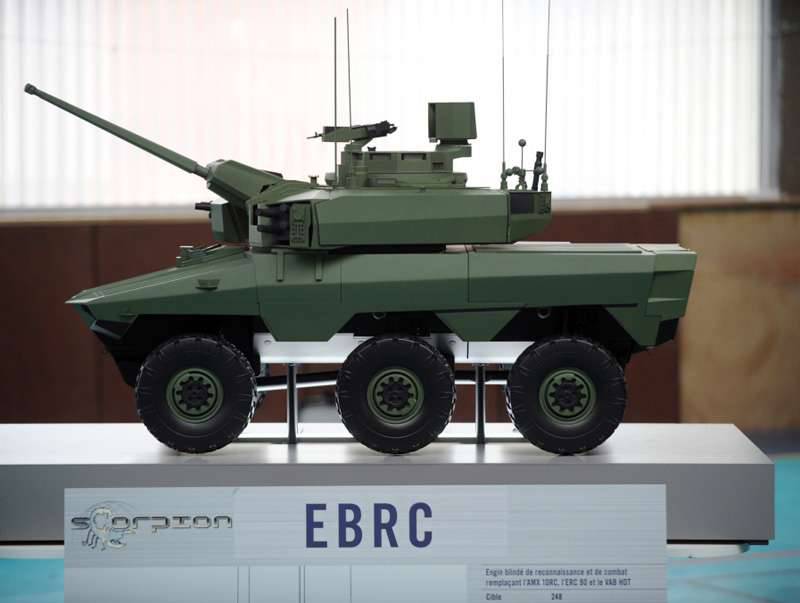
In December 2014, it was announced that Nexter Systems, Renault Trucks Defense and Thales would develop and manufacture 248 EBRC 6xXNNXX reconnaissance vehicles for the French army
Wheel Jaguars
5 December 2014 French Defense Minister Jean-Yves Le Drian announced that a consortium consisting of Nexter Systems, Renault Trucks Defense and Thales will be awarded a contract to develop and manufacture combat reconnaissance armored vehicles EBRC 6X6 (Engin Blind de Reconnaissance et de Combat), as well as multi-purpose armored vehicles VBMR 6x6 (Vеhicule Blindе Multi-roles). These two platforms will be the first to be created as part of the French Army Scorpion digitization program.
According to current plans, the army will receive 248 EBRC 6x6 machines, called Jaguar, for the 256 service company, which will be equipped with the X10 XXUMXX6 6 105 XXUMNXXX110 with 90-mm cannon. Deliveries of the first cars are scheduled for 6 year.
New armored vehicle Jaguar category by weight 20-25 tons will be equipped with a double tower armed with 40-mm gun with telescopic ammunition CTC from the company CTA International, 7,62-mm machine gun and anti-seeking missiles MMP (Missile Moyenne Portee) from MBDA range 4000 meters, currently being developed. The Jaguar machine is the first French application for the 40-mm CTC guns; it will have a protection level in accordance with the STANAG 4 NATO Standard 4569. The car will also have a warning system for laser radiation, a missile launch detection system, a radio frequency and infrared jamming system, and four smoke grenade launchers along the sides of the turret.
The intelligence units of the French army also operate the Panhard VBL (Vеhicule Blindé Léger) armored car, designed to meet the requirements of a compact reconnaissance and communication vehicle 4x4, which could be easily deployed over the air. Since 1990, Panhard has manufactured more 1600 VBL machines for the French army and 700 machines for foreign customers from 15 countries.
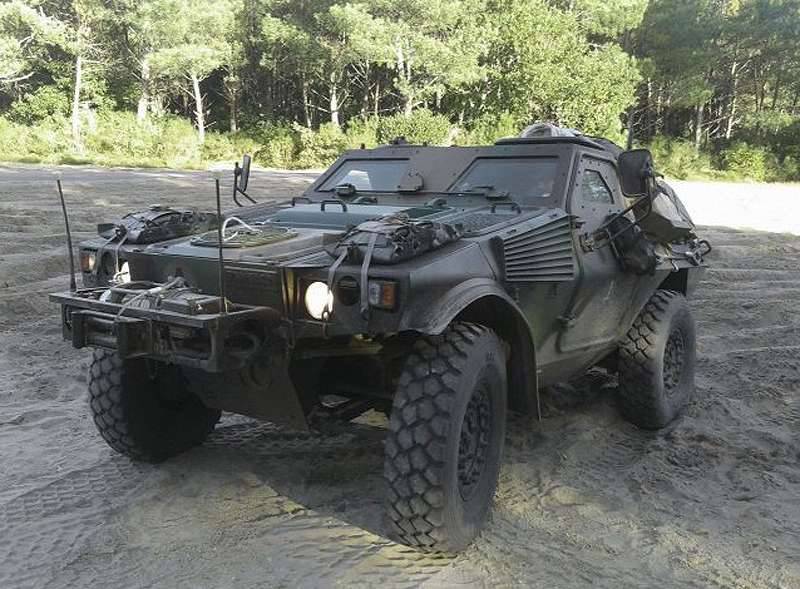
Armored car Panhard VBL
Focus on the future
Beginning with 2030-2035, the reconnaissance units of the French army are awaiting the deployment of the VBAE (Vеhicule Blindé d'Aide a l'Engagement) multipurpose combat support vehicle, which will replace the VBL. The question of how best to maintain the effectiveness of VBL until that time and in December 2014, the company Panhard delivered for the evaluation tests of the upgraded VBL System Demonstrator, also known as VBL Ultima, is being addressed.
The emphasis in the modernization of the VBL car, apparently, is on increasing mobility, since the new engine and transmission will be installed, the front suspension, the rear suspension with double wishbone, the new anti-lock braking system and larger wheels will be strengthened. These improvements will allow the army to install additional protection and a heavier EUMD. The total mass of the VBL will increase from 3900 to 5000 kg. Under the contract, Panhard will deliver three pre-production machines that will undergo advanced testing at the start of 2016. The army hopes that funding will be provided for upgrading machines in quantities up to 800 units.
STRYKER brigades
Situational awareness lies at the heart of the operational concept of the combat brigades of the American Army SBCT (Stryker brigade combat team), equipped with specialized wheeled armored fighting vehicles Stryker. Each SBCT brigade includes a reconnaissance battalion of 428 men.
Each battalion includes three reconnaissance companies, a company of electronic reconnaissance, a headquarters and a staff company. Each reconnaissance company is armed with 13 military reconnaissance vehicles M1127 Stryker RV (Reconnaissance Vehicle); This is one of the ten variants of the GDLS Stryker 8x8 machine. In turn, the reconnaissance company consists of three platoons, each with four cars. Each staff company of the three SBCT infantry battalions has a reconnaissance platoon with four Stryker RVs; that is, it is easy to calculate that the 51 reconnaissance vehicle M1127 Stryker RV is in service with one SBCT brigade.
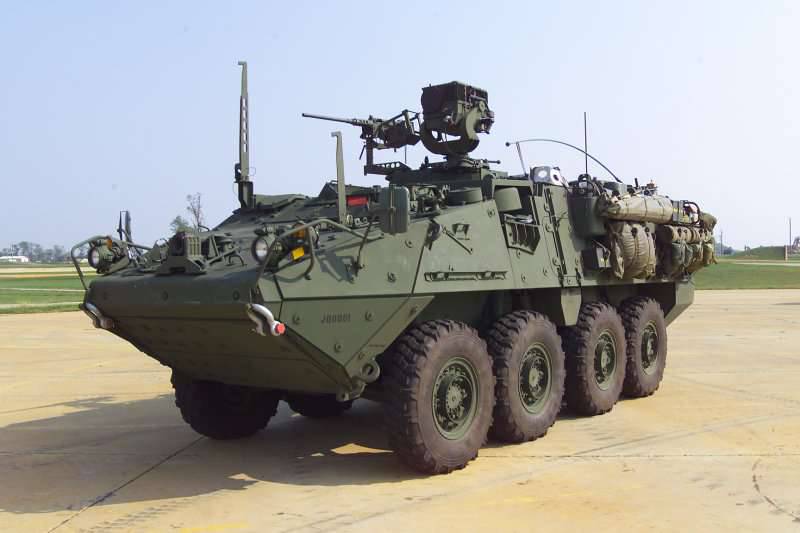
Intelligence armored vehicle M1127 Stryker RV
The Stryker RV is equipped with Raytheon's LRAS3 (Long Range Advanced Scout Surveillance System) reconnaissance complex, which includes a second-generation thermal imager, a day-time camera and a eye-safe laser range finder.
The LRAS3 complex is currently installed on the commander’s turret, but the army intends to install a mast of 10 meters on the machine to better utilize the characteristics of sensors that have an 10 km range. The Stryker RV armored car is also equipped with Force XXI Battle Command Brigade and Below digital battle management system. The M1127 armored car is armed with either an 12,7-mm machine gun M2 or an 40-mm automatic grenade launcher MK19.
Optical-electronic complex LRAS3
The army is gradually upgrading the original flat-bottom Stryker cars to the Stryker DVH dual V-hull configuration, which has proven its resistance to IED attacks since its first deployment in Afghanistan in the middle of 2011.
Army commanders would like to upgrade the machines of all nine SBCT brigades to DVH configuration with funding available. At the same time, three brigades received upgraded vehicles in 2014, while the army received funding to upgrade the machines of the fourth brigade. The modernization of the remaining teams will most likely depend on more detailed technical proposals for the modernization of the Stryker fleet, including increased mortality.
Bradley Scout
The reconnaissance battalion, which is part of each ABCT (armored brigade combat team), consists of four companies: a headquarters and a staff company and three reconnaissance companies. Each company consists of a staff platoon, two reconnaissance platoons and a mortar squad. Each of the two reconnaissance platoons is equipped with M3А3 Bradley BAE Systems reconnaissance vehicles and five HMMWV AM General armored reconnaissance vehicles equipped with the LRAS3 complex.
The M3A3 Bradley is also in service with the reconnaissance battalion that is part of the reconnaissance regiment. Each of the three reconnaissance companies of the regiment includes a headquarters, two reconnaissance platoons of six M3A3 vehicles, two tank platoons of four M1A2 main battle tanks, a mortar compartment and a service compartment.
Bradley's newest M3A3 has been tested in urban operations and open battle scenarios in Iraq. The A3 variant is distinguished by its digital architecture, network and communication integration with heavy teams. The current technical proposals for improving the Bradley combat vehicle, according to American combat vehicle experts, focus on upgrading the suspension and tracks, the power unit, improving the power distribution and control system, and ultimately, increasing mortality.
Light intelligence
As a supplement to the ultra-light combat vehicle ULCV (Ultra-Light Combat Vehicle), designed to carry nine infantrymen, which is planned to be used by the infantry brigade combat team (IBCT) light brigades to increase their tactical mobility LRV (Light Reconnaissance Vehicle) to equip reconnaissance battalions of its lighter IBCT brigades.
The modernization strategy of the US Army combat vehicles, published in September 2015, states: “The Light Brigade Reconnaissance Battalion lacks the ability to provide security for vulnerable light infantry while moving, moving between motorized and dismounted intelligence activities, or fighting for information on increased tactical distances.
The LRV must carry six reconnaissance aircraft, support weapons, such as the M12,7 2-mm machine gun or the MK40 19-mm grenade launcher, as well as sensors, while a light booking will provide some level of protection against small fire weapons and shell splinters.
For amphibious operations, both ULCV and LRV vehicles must withstand a parachute jump. In principle, in order to reduce costs, the LRV can be based on a ULCV armored car configured for the necessary tasks with the help of a specialized kit.
In June 2015, eight companies sent their candidates for the LRV program to the Fort Benning training center so that the army could check out the solutions. Companies AM General, Boeing, General Dynamics, Navistar, Northrop Grumman, Oshkosh, Polaris and Vyper Adamas have shown interest in applying for one or both of the programs.
From 2016, the army will begin to adapt the standard reconnaissance platoon "6x36" in all ABCT, SBCT and IBCT combat brigades. Six cars each (depending on the type of brigade, Bradley, Stryker RV or LRV) in the brigade and 36 soldiers in each platoon. Half of the scouts will be trained and equipped for discharged operations.
Canadian duet
From 616 LAV III 8x8 machines that GDLS Canada (GDLS-C) for the Canadian Army is upgrading to LAV 6.0 configuration, 66 LRSS reconnaissance and surveillance machines (LAV Reconnaissance Surveillance Systems). The project, which aims to extend the life of the LAV III to 2035, includes improved fire control and target designation systems, increased fire power, increased mobility, installation of a double V-shaped bottom and increased ballistic protection from the 3 level to the 4 level in accordance with the standard STANAG 4569.
Apparently, the machine LRSS will be the latest version of the LAV 6.0; Its deliveries are scheduled to begin in December 2016. The Canadian government signed a contract with GDLS-C worth 214,5 million dollars in November 2014 of the year for the supply and integration of an improved monitoring kit, including a retractable mast 10 meters in height, an operator’s workplace and an optoelectronic station on a stabilized platform that includes radar, instruments observations (day, thermal and image intensification), laser range finder and GPS system.
According to the company GDLS-C, these improvements "will allow to obtain excellent detection ranges, work while in motion, integrated power supply management for silent operation and transmission of images through a communication system."
In the middle of 2015, DRS Technologies, together with Thales Canada, received a subcontract from GDLS-C for the production of mast observation stations and associated operator workplaces, as well as service support for equipment and software for eight years. Under this contract, DRS updated its SABER (Surveillance and Battlefield Reconnaissance Equipment) surveillance and intelligence system, which was successfully deployed by the Australian army in 2013.
The modular sensor set SABER is a radar, thermal imaging and laser systems installed on a stabilized 20-meter electric mast manufactured by the Danish company Falck Schmidt Defense Systems. According to DRS, the SABRE kit “facilitates shelter work or movement in difficult conditions, while simultaneously distributing target data from multiple sensors across the entire command and control network.”
Thales will also develop and certify BOSS (Battlefield Operational Surveillance Software) operational monitoring software, which will allow operators to configure, monitor and monitor surveillance sensors using a special user interface. In addition, Thales Canada is the main contractor for the Canadian Army Land Command Support System support system.
The new LRSS will partly replace the remaining approximately 195 Coyote 8x8 LAV II RVs, which entered service in 1996 to equip three regular armored regiments in three versions: commander; mast with installed surveillance system; and remote with a removable surveillance system.
The seven reconnaissance battalions in the three regiments will also operate tactical patrol armored vehicles TAPV (Tactical Armored Patrol Vehicle) 4x4 manufactured by Textron Systems, although the army is still discussing the exact combination of reconnaissance vehicles. In June, the government selected Textron Systems' 2012 project, based on the Commando Elite armored personnel carrier, in order to meet the needs of the army in 200 reconnaissance and 300 universal vehicles with an option for 100 vehicles.
The manufacturer describes Commando Elite as “a top-notch system with an excellent combination of mobility, lethality and survivability” in its widespread Commando machine family. Textron Systems refined the TAPV project to eliminate the flaws revealed during the reliability and maintainability tests that took place in the 2014 year. Now the start of deliveries is expected in March 2016 of the year (if not earlier), which will allow the army to achieve initial combat readiness in June of the 2016 year.
In the reconnaissance vehicle TAPV, there are four people with a seat for another passenger, while the universal version has a crew of three people plus four fully equipped infantrymen. For installation on the TAPV armored personnel carrier, the army ordered the 364 DBMS Kongsberg Protector DRWS - a new version of the widely-used SDAR Protector, designed specifically for the TAPV project.
The DRWS combat module can be armed with two types of weapons, for example, the Rheinmetall C40 16-mm automatic grenade launcher and the FX Herstal 7,62-machine gun C6, in addition, two operators can observe and fire from it. Protector DRWS is produced by the Canadian subsidiary of the Norwegian company Kongsberg.
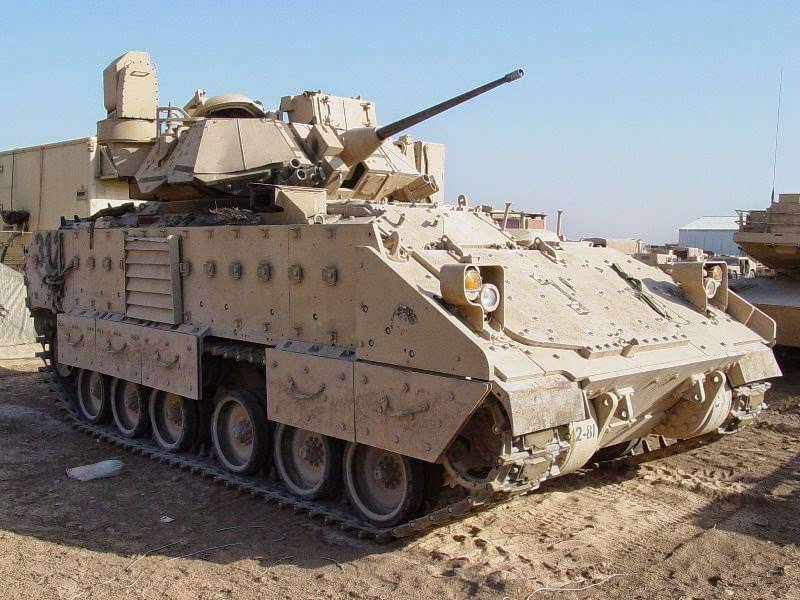
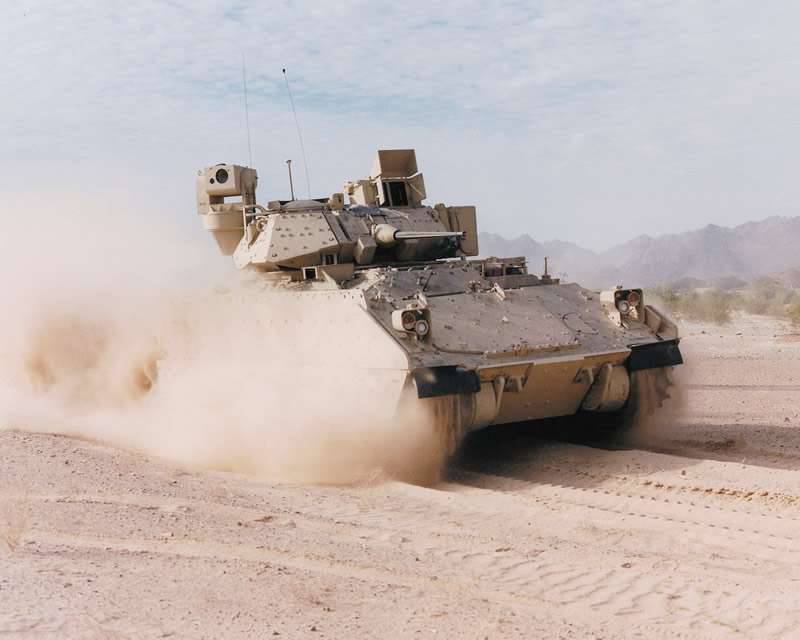
The reconnaissance vehicle company BAE Systems M3A3 Bradley CFV is in service with reconnaissance platoons of heavy brigades of the American army
Australian project LAND 400
The final list of applicants for the supply of a new CRV (Combat Reconnaissance Vehicle) combat reconnaissance vehicle, which will replace the ASLAV (Australian LAV) 8x8 reconnaissance armored personnel carrier, is to be announced at the beginning of 2016.
To equip its two reconnaissance regiments, Australia bought ASLAV 227 machines in 1996-2007 in seven versions: reconnaissance with an 25-mm cannon; Armored personnel carrier; commander; observations; sanitary; workshop; and evacuation. The deadline for the operation of these machines is scheduled for 2021 year. The army plans to acquire 225 CRV machines in seven versions: 129 intelligence and counterintelligence; 26 operational control; eight fire controls; 17 surveillance; 15 sanitary; 20 repair; and 10 evacuation.
In addition to training the crews, the vehicles will be used by the reconnaissance battalion in each reconnaissance regiment, which are formed as part of the Plan Beersheba military restructuring project being implemented.
The Land 400 ground combat vehicle project is divided into two stages of procurement: Stage 2 for the CRV vehicle, and Stage 3 provides for the purchase of tracked infantry fighting vehicles to replace the M113 APC. The working group on the procurement and operation of military equipment focuses on the fact that this project “is much more than just a machine replacement program. Land 400 integrates sensors, weapons and information systems in a joint network that will increase the collective capabilities of our army, fleet и aviation».
A call for a competition for the 2 Stage was released in February 2015 of the year and closed in September; At present, the evaluation of submitted applications is underway. According to the representative of the working group: "The announcement of the initial list of applicants selected for further participation is scheduled for March 2016 of the year."
The estimated initial operational readiness of the first intelligence regiment of the Australian Army is scheduled for 2022-2023 years, and full operational readiness of all three regiments is planned for 2024 year.
Applicants must offer a ready-made fighting vehicle, which is defined as “already recognized in the armed forces of another country or Australia.” In addition, they can also offer its modified version, that is, “the same machine, but with a set of advanced options or upgrades that will increase the level of compliance of the machine with the requirements”.
Combining efforts
This program is claimed by several groups of companies offering joint projects. BAE Systems Australia has teamed up with Patria to offer a BAE Systems Haglunds E35 turret for installation on the Finnish Patria Armored Modular Vehicle 8x8 armored modular vehicle. GDLS-Australia has teamed up with Thales Australia to offer a car based on LAV 8x8. Rheinmetall offers the latest version of its Boxer 8x8, equipped with a Lance turret with 35-mm cannon and digital architecture from Northrop Grumman, while ST Kinetics and Elbit Systems of Australia offer a solution based on the Singapore Terrex 8XXNNXX armored car.
New reconnaissance vehicle CRV will be the first machine in the Australian army with a medium-caliber gun and anti-tank systems. The candidates for this ATGM system are FGM-148E Javelin from Lockheed Martin / Raytheon, Land Combat Missile System from MBDA based on the French MMP and finally Spike-Long Range manufactured by Rafael.
Materials used:
www.shephardmedia.com
www.baesystems.com
www.gov.uk
www.gdls.com
www.nexter-group.fr
www.thalesgroup.com
www.gdlsaustralia.com
www.wikipedia.org
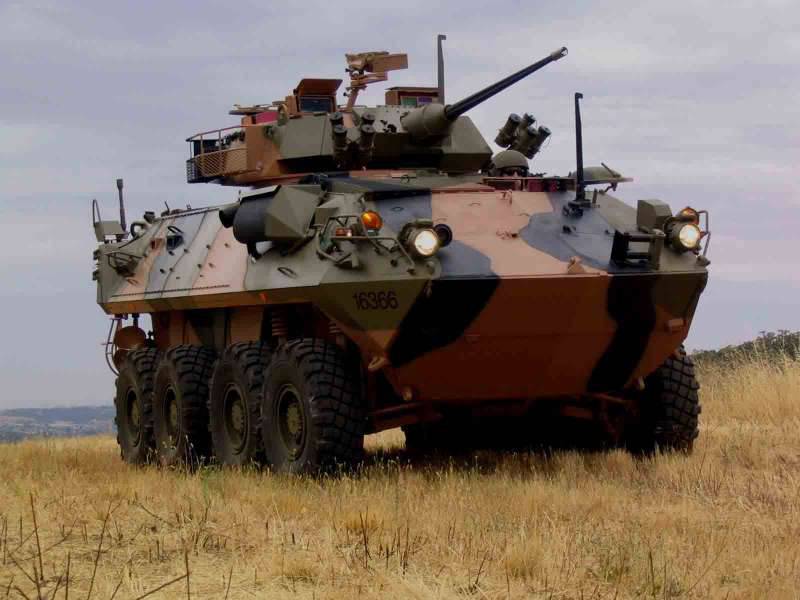
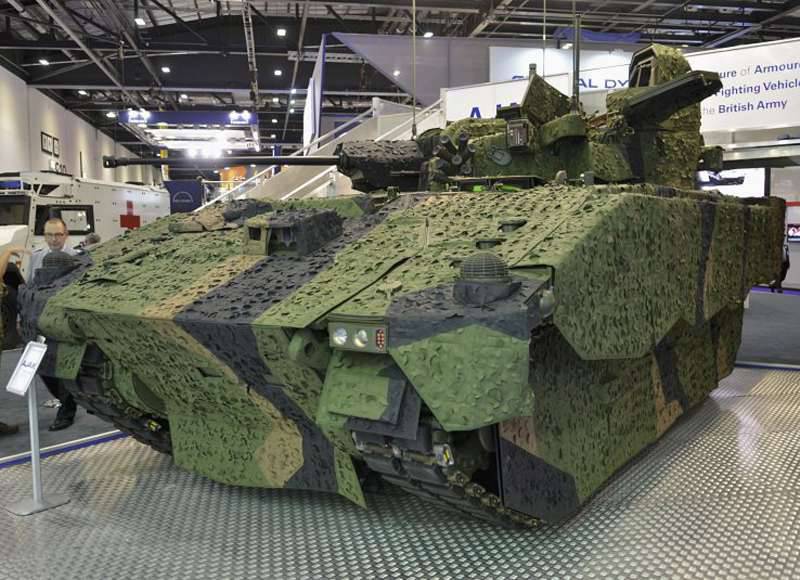
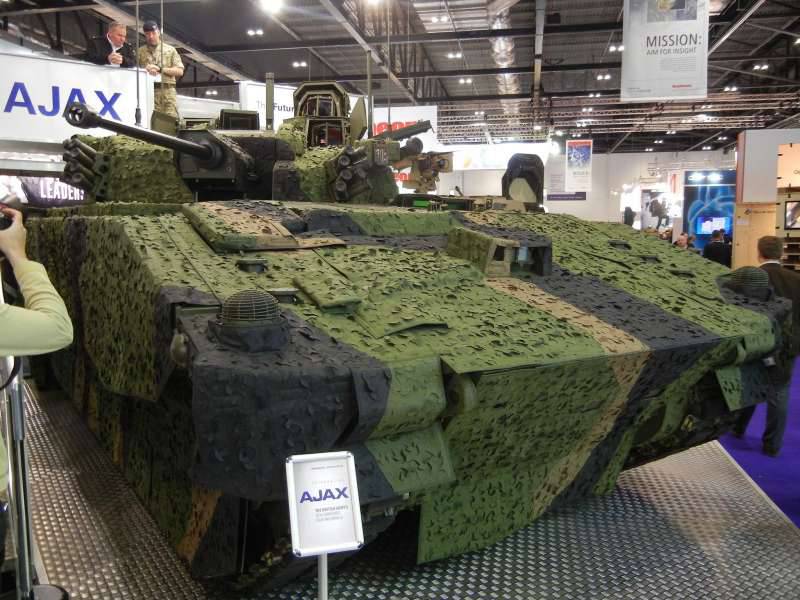
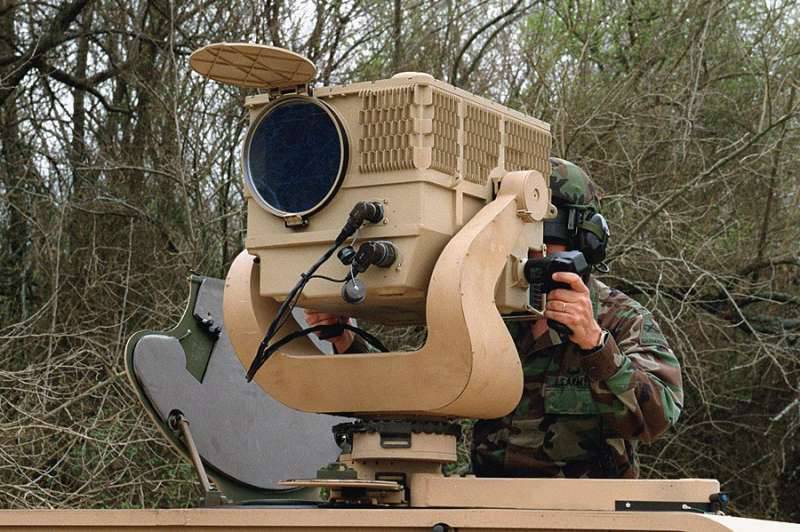
Information